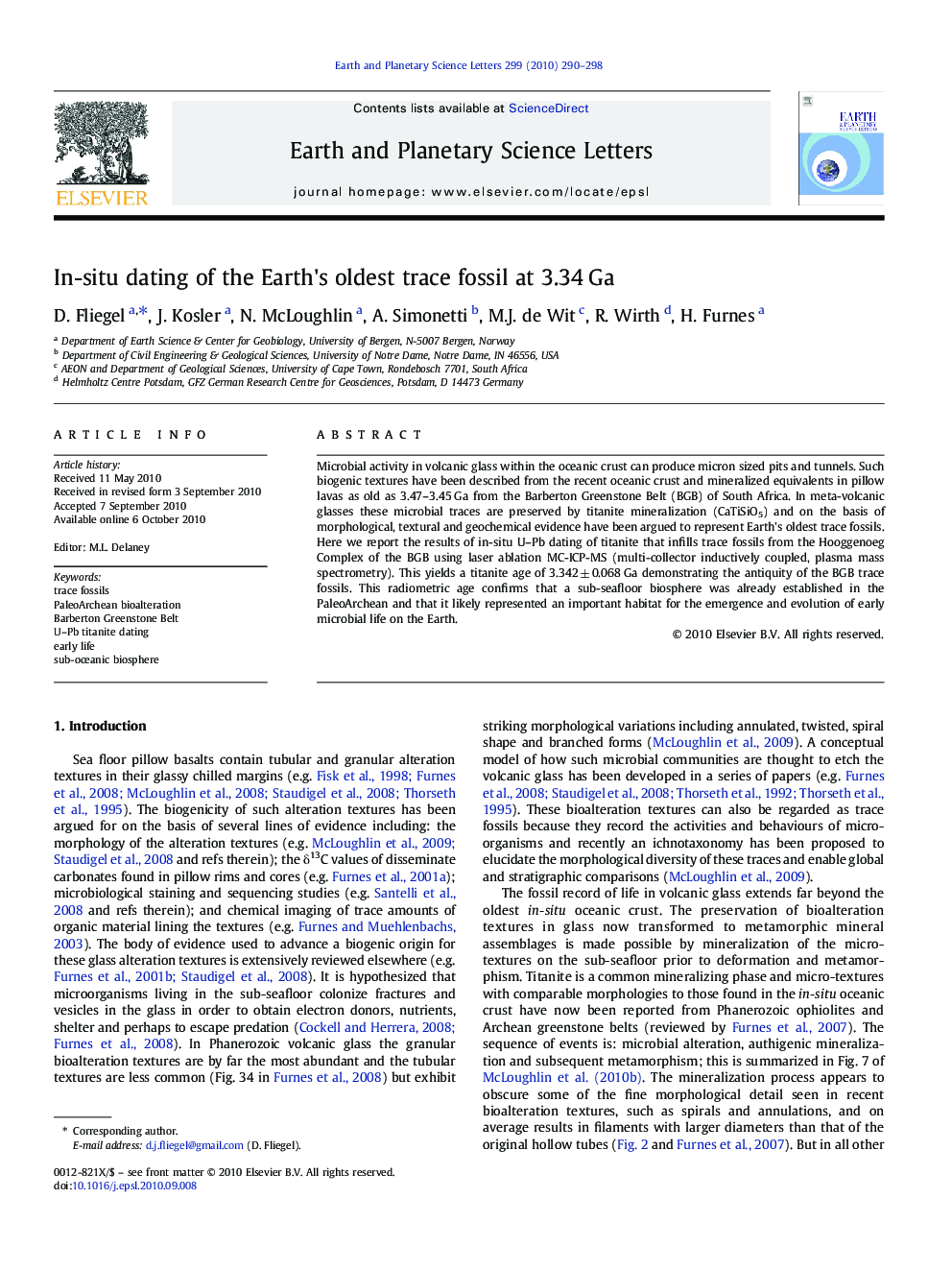| کد مقاله | کد نشریه | سال انتشار | مقاله انگلیسی | نسخه تمام متن |
|---|---|---|---|---|
| 4678300 | 1634841 | 2010 | 9 صفحه PDF | دانلود رایگان |

Microbial activity in volcanic glass within the oceanic crust can produce micron sized pits and tunnels. Such biogenic textures have been described from the recent oceanic crust and mineralized equivalents in pillow lavas as old as 3.47–3.45 Ga from the Barberton Greenstone Belt (BGB) of South Africa. In meta-volcanic glasses these microbial traces are preserved by titanite mineralization (CaTiSiO5) and on the basis of morphological, textural and geochemical evidence have been argued to represent Earth's oldest trace fossils. Here we report the results of in-situ U–Pb dating of titanite that infills trace fossils from the Hooggenoeg Complex of the BGB using laser ablation MC-ICP-MS (multi-collector inductively coupled, plasma mass spectrometry). This yields a titanite age of 3.342 ± 0.068 Ga demonstrating the antiquity of the BGB trace fossils. This radiometric age confirms that a sub-seafloor biosphere was already established in the PaleoArchean and that it likely represented an important habitat for the emergence and evolution of early microbial life on the Earth.
Journal: Earth and Planetary Science Letters - Volume 299, Issues 3–4, 1 November 2010, Pages 290–298